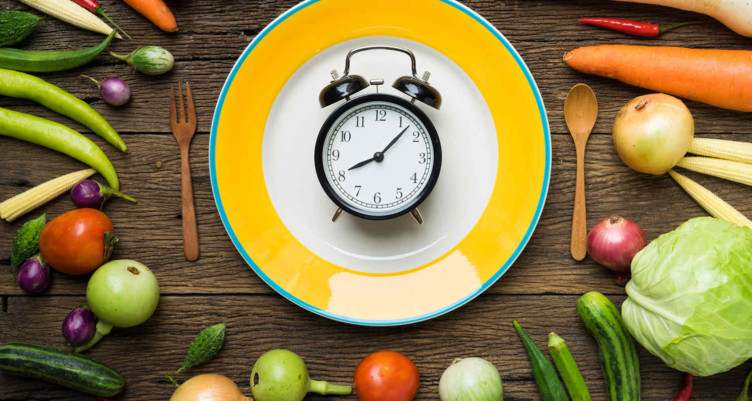How to Do an Elimination Diet: Steps, Benefits & Meal Plan

The Complete Guide to Starting an Elimination Diet
- An elimination diet helps identify food sensitivities by systematically removing and reintroducing foods that could trigger symptoms.
- Creating an effective elimination diet meal plan helps you stay nourished while identifying which foods may trigger unwanted symptoms like fatigue or digestive discomfort.
- Many people report improved energy and focus once they identify and eliminate certain foods.
Do certain foods leave you feeling bloated, drained of energy or with brain fog? If so, the reason could be on your plate. An elimination diet can help spot hidden food sensitivities and intolerances by systematically removing and reintroducing foods.
Around 20% of people deal with at least one food intolerance.[1] Awareness of common intolerances—like gluten and lactose—has grown and many find relief from symptoms once they identify and avoid their triggers.[2]
An elimination diet offers a straightforward way to uncover food intolerances. This guide will explain how to start and plan your elimination diet. Before you start, though, check in with your doctor to rule out any food allergies, which can be severe or even life-threatening.
What Is an Elimination Diet?
Do you have food sensitivities or intolerances? An elimination diet can help you find answers. By removing specific foods and tracking your body’s response, you may identify which items trigger symptoms. It could indicate a sensitivity if your symptoms improve after cutting out a particular food.
Elimination diets vary. Some people find relief by cutting out gluten and dairy for a few weeks. Others take a more detailed approach, like the low-FODMAP diet, which removes certain carbohydrates to manage symptoms of irritable bowel syndrome.[3]
In general, an elimination diet works by avoiding common trigger foods and reintroducing them one at a time. This approach helps reveal whether certain foods cause inflammation, digestive issues, skin problems, headaches, or other unwanted side effects.
You may notice improved sleep, mental clarity, and digestion by temporarily removing certain foods. While the process may feel challenging initially, it often leads to better overall health. Plus, with the proper elimination diet recipes, you can stay nourished and avoid symptoms without sacrificing flavor.
Finding foods that fit your elimination diet makes the process easier and more enjoyable. Convenient, tasty options—like Bulletproof Collagen Protein Bars, free of gluten, soy, and dairy—can help you stick to your plan while meeting your nutritional needs.
Signs of food sensitivities

Food intolerance differs from a food allergy, though some symptoms may overlap. A food allergy triggers an immune response and requires diagnosis and treatment by a healthcare professional. Allergies can be life-threatening, while a food intolerance or sensitivity, though uncomfortable, doesn’t pose the same severe risks. Always consult your healthcare provider before beginning an elimination diet.
Food intolerances often appear subtly, and symptoms can even be mistaken for other issues. For example, gluten may leave you feeling fatigued[4]?while dairy could cause digestive discomfort. [5] Unlike allergic reactions, which happen quickly, food intolerance symptoms might appear 24 to 48 hours after eating the trigger food and linger for hours or even days.[6]
Do you have a food intolerance? Common signs[7] include:
- Dry skin
- Digestive issues, such as gas, bloating, constipation, or diarrhea
- Itching
- Fatigue
- Headaches or migraines
- Stomach pain
- Joint aches
Everyone reacts differently, so pay attention to how you feel after eating. Identifying patterns can help reveal any connections between symptoms and certain foods.
What Can You Eat on an Elimination Diet?

One of the biggest challenges of an elimination diet is identifying which foods could cause a reaction. The Bulletproof Diet Roadmap simplifies this process with a step-by-step guide.
The Roadmap ranks foods by their potential to trigger inflammation or other reactions. During your elimination phase, stick to foods in the “green zone” on the Roadmap. This list includes nourishing options like grass-fed, organic meats, many whole, plant-based foods and specific plant-based products like MCT oil from coconuts. Fill your plate with quality proteins, healthy fats, and plenty of vegetables from the green zone.
Here’s how to follow an elimination diet using the Bulletproof Diet Roadmap:
- Eat only green zone foods for at least two weeks, avoiding eggs and dairy.
- Make a list of foods you want to test for potential reactions.
- To start reintroducing, pick one test food and eat it as desired for three days.
- Record how you feel during the reintroduction phase. Write down every detail, no matter how small.
- After three days, return to only green zone foods for three to four days, until you feel normal again.
- Repeat steps 3-5 for each test food on your list.
This method lets you pinpoint which foods support your health and which may cause discomfort.
Foods to Avoid During an Elimination Diet
Which foods should you steer clear of during your elimination diet?[8][9]
- Dairy products (milk, ice cream, sour cream)
- Eggs
- Gluten (including barley, oats, rye, wheat)
- Fish and shellfish
- Nightshades (tomatoes, eggplant, peppers, potatoes)
- Citrus
- Legumes (soy products, beans, lentils, peanuts, peas)
- Tree nuts
- Corn
- Smoked or cured meats, which may contain histamine and tyramine, compounds that could trigger reactions[10]
- Sweets, candy, and any foods with refined sugar, corn syrup, artificial colors, or flavors
Avoiding these foods helps create a clear baseline, making it easier to identify potential triggers once you begin reintroducing foods.
Elimination Diet Sample Meal Plan
As you begin your elimination diet, double-check ingredient labels carefully. Some foods may seem acceptable until you read the fine print. Need some inspiration? Here’s a simple example of what a day on an elimination diet might look like. This sample plan avoids all the foods listed earlier.
- Breakfast: If coffee is part of your diet, start with Bulletproof Coffee, packed with quality fats to keep you alert and satisfied. Want to switch it up? Try a creamy Keto Hot Chocolate instead.
- Lunch: Enjoy a Low-Carb Thai Salad with Grilled Steak, featuring fresh vegetables, coconut oil or Bulletproof Grass-Fed Ghee and grass-fed sirloin in a spicy, Asian-inspired marinade (omit honey to keep it elimination-friendly).
- Snack: Snack on crunchy veggie sticks or sweet potato chips throughout the day. You’ll find even more ideas with Whole30 snacks for variety.
- Dinner: End your day with a hearty Slow-Cooker Beef Stew, simmered to perfection. Pair it with quinoa, brown rice, or buckwheat—gluten-free, elimination-friendly sides.
This meal plan provides nourishing options while helping you avoid potential triggers. Adapt these meals to suit your tastes and dietary needs.
How Long Does an Elimination Diet Take to Work?

The timeline for an elimination diet depends on your body and your specific approach. Some people notice changes within a few days, while for others, it may take several weeks or even months.
Here are two common examples:
- Whole30:This elimination diet eliminates common triggers like ultra-processed foods, artificial additives, grains, dairy and legumes. It lasts 30 days.
- FODMAP Diet: Designed to reduce certain short-chain carbohydrates that can irritate digestion,[11] the FODMAP diet spans three to four months. It involves a low-FODMAP elimination phase followed by a gradual reintroduction phase.
The length of your elimination diet will vary based on your unique response. Bodies take time to clear out potential triggers and reactions may persist initially. If symptoms don’t improve right away, keep going and stay in touch with your healthcare provider.
While elimination diets can help some people, they aren’t a cure-all. Food may not be the underlying issue. Consulting your doctor for medical insights or working with a nutritionist or dietitian can ensure you take a balanced approach and explore other possible causes.
Who Can Benefit from an Elimination Diet

Even if you don’t suspect food sensitivities, an elimination diet can offer insights into how certain foods affect you. Here’s why trying it once may help you feel your best:
More Energy and Mental Clarity
If your body reacts daily to something you eat, you may not realize how much better you could feel without it. Many people report increased energy and mental clarity after a few days of detox. If you notice similar improvements, it could signal that certain foods are holding you back.
Identifying Foods That Cause Inflammation
Chronic inflammation is common in the presence of everyday stressors, environmental pollutants, and food chemicals.14 While inflammation is part of immune functions,15 it can become problematic if it occurs too often or on a large scale. Over time, chronic inflammation can damage cells and tissues, often without apparent symptoms.
An elimination diet may reveal whether certain foods contribute to inflammation. Feeling better for a few weeks can clarify if these symptoms return when reintroducing certain foods.
For some, though, an elimination diet may not be the right fit. Its restrictive nature may pose challenges, especially if you have a history of eating disorders. Work closely with a physician or registered dietitian to make the right choices for you.
Give us 30 days and we'll give you more energy. Get tips, recipes and more that will help you become the best version of YOU.
This article was originally published November, 2018 and has been updated with new content.



